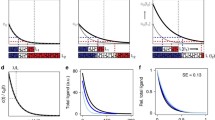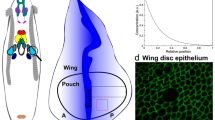Abstract
In 1968 Saunders & Gasseling discovered that a group of cells at the posterior margin of the chick wing bud has a remarkable morphogenetic potency: if transplanted to the anterior site of a host limb bud, a mirror image duplication of the normal pattern of digits develops (cf. Figure 3.1). This group of cells was labeled the ‘zone of polarizing activity’ (ZPA) and ever since extensive studies have established many interesting features of the digit pattern formation. A simple model was put forward by Tickle et al. (1975) which could describe the experimental facts of pattern duplications. This model was based on the assumption that the ZPA is the source of a morphogen which diffuses along the anteroposterior axis. At the same time the morphogen is supposed to decompose via first order kinetics. Asymptotically, a stable morphogen gradient is established which, by appropriate threshold concentrations, can separate the morphogenetic field into bounded areas for digits 4, 3 and 2 of the wing bud (Tickle et al. 1975) (cf. Figures 3.2 and 3.3).
Access this chapter
Tax calculation will be finalised at checkout
Purchases are for personal use only
Preview
Unable to display preview. Download preview PDF.
Similar content being viewed by others
References
Bryant, S. V., Hayamizu, T., Wanek, N., & Gardiner, D. M. 1991. Position dependent properties of limb cells. In Developmental Patterning of the Vertebrate Limb, J. M. Hurle, J. R. Hinchliffe & D. Summerbell (ed). pp. 133–142, New York: Plenum Press.
Dolle, P., Rubelte, E., Leroy, P., Morriss-Kay, G., & Chambon, P. 1990. Retinolc acid receptors and cellular retinoid binding proteins: I. A systematic study of their different pattern of transcription during mouse organogenesis. Development, 110, 1133–1151.
Eichele, G., Tickle, C., & Alberts, B. M. 1985. Studies on the mechanism of retinoid-induced pattern duplications in the early chick limb bud: Temporal and spatial aspects. J. Cell. Biol., 101, 1913–1920.
Harrison, L. G. 1987. What is the status of reaction-diffusion theory thirty-four years after Turing? J. Theor. Biol., 125, 369–384.
Murray, J. D. 1982. Parameter space for Turing instability in reaction-diffusion mechanisms: a comparison of models. J. Theor. Biol., 98, 143–163.
Murray, J. D. 1989. Mathematical Biology. New York: Springer-Verlag.
Papageorgiou, S., & Almirantis, Y. 1982. Diffusion or autocatalysis of retinoic acid cannot explain pattern formation in the chick wing bud. Dev. Dynam, 194, 282–288.
Saunders, Jr., J. W., & Gasseling, M. T. 1968. Ectodermal-mesenchymal interactions in the origin of limb symmetry. In Epithelial-Mesenchymal Interactions, Billingham, R. Fleischmajer & R. E. (ed). pp. 78–97, Baltimore: Williams & Wilkins Co.
Thaller, C., & Eichele, G. 1987. Identification and spatial distribution of retinoids in the developing chick bud. Nature, 327, 625–628.
Tickle, C., Summerbell, D., & Wolpert, L. 1975. Positional signaling and specification of digits in limb morphogenesis. Nature, 254, 199–202.
Tickle, C., Alberts, B., Wolpert, L., & Lee, J. 1982. Local application of retinoic acid to the limb bud mimics the action of the polarizing region. Nature, 296, 564–565.
Tickle, C., Lee, J., & Eichele, G. 1985. A quantitative analysis of the effect of all-trans-retinoic acid on the pattern of chick wing development. Dev. Biol., 109, 82–95.
Wanek, N., Gardiner, D. M., Muneoka, K., & Bryant, S. V. 1991. Conversion by retinoic acid of anterior cells into ZPA cells in the chick wing bud. Nature, 350, 81–83.
Wolpert, L. 1989. Positional information revisited. Dev. Biol., 107, 3–12. (Supplement).
Author information
Authors and Affiliations
Editor information
Editors and Affiliations
Rights and permissions
Copyright information
© 1993 Springer Science+Business Media New York
About this chapter
Cite this chapter
Almirantis, Y., Papageorgiou, S. (1993). Retinoic Acid cannot be the Morphogen in Reaction-Diffusion Models for the Formation of the Chick Wing Bud. In: Othmer, H.G., Maini, P.K., Murray, J.D. (eds) Experimental and Theoretical Advances in Biological Pattern Formation. NATO ASI Series, vol 259. Springer, Boston, MA. https://doi.org/10.1007/978-1-4615-2433-5_3
Download citation
DOI: https://doi.org/10.1007/978-1-4615-2433-5_3
Publisher Name: Springer, Boston, MA
Print ISBN: 978-1-4613-6033-9
Online ISBN: 978-1-4615-2433-5
eBook Packages: Springer Book Archive




